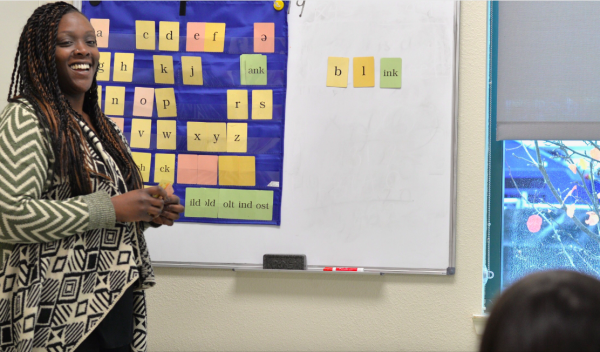 A bill to remove references to “at-risk youth” and replace the term with “at-promise youth” in California’s Education Code and Penal Code was approved by California governor Gavin Newsom in mid-October. The bill does not change the definition of “at risk,” it merely replaces it with “at promise.”
A bill to remove references to “at-risk youth” and replace the term with “at-promise youth” in California’s Education Code and Penal Code was approved by California governor Gavin Newsom in mid-October. The bill does not change the definition of “at risk,” it merely replaces it with “at promise.”
“For far too long, the stigmatizing label of ‘at risk’ has been used to describe youth living in difficult situations,” said Assemblymember Reginald Byron Jones-Sawyer Sr., lead author of the bill, in an address to the California State Assembly earlier this year.
“This is a perception issue,” said Jones-Sawyer. “By using this term, we are creating expectations of failure for our most vulnerable students.”
Describing vulnerable young people as “at risk” has become ubiquitous in schools, colleges and universities in the U.S. over the past 30 years. There are numerous federal funding streams, conferences, training programs and ed-tech companies dedicated to identifying and supporting students deemed statistically most likely to struggle and, possibly, fail. Some educators argue that these efforts, though well intentioned and intended to help students, can have a negative impact because of their deficit-based approach.
Elizabeth Swadener, a professor of justice studies at the School of Social Transformation at Arizona State University, was among one of the first academics to argue in the early 1990s that labeling children and young people as “at risk” was problematic.
In the 1960s, children from low-income and minority ethnic families were widely thought to possess “cultural deficits” that prevented them from doing well academically. Swadener has long argued the “at-risk” label is just a newer version of the cultural deficit mind-set. The label is “implicitly, if not explicitly, racist, classist and problematic as children and their parents are very much aware that they are seen as at risk for failure,” she said.
Removing the “at-risk” label in California is a positive first step to changing the way educators address and think about children and young people in the state, said Swadener. “While I didn’t advocate a relabeling with ‘at promise,’ it is an important step in seeing the promise in all children, including those with numerous challenges,” she said.
Matthew LaPlante, associate professor of journalism and communication at Utah State University, is a member of the board of Reaching At-Promise Students Association, a nonprofit professional development and networking membership organization that pushed for the legislative change in California.
“I believe very strongly that words have great power,” said LaPlante. “We have known for a very long time that this group of students doesn’t like to be referred to as failures, as dropouts, as at risk. If we start the conversation about their promise, it changes the starting point from which we can work to identify what is pushing them off the path to graduation.”
A word change alone isn’t going to help students, said LaPlante, and he recognizes there may be criticism of simply exchanging one set of words for another.
“We’re not pretending for a moment that changing words really changes anything — this has to be followed by a lot of action,” said LaPlante. “This is a starting point.”
Excerpted from “No More ‘At-Risk’ Students in California” in Inside Higher Ed. Read the full article.
Source: Inside Higher Ed | No More ‘At-Risk’ Students in California, http://www.insidehighered.com/news/2019/11/05/changing-conversation-about-%E2%80%9C-risk%E2%80%9D-students-california | Copyright © 2019 • Inside Higher Ed
Do you need someone to talk to? CHC can help. We invite you to call or email our Care Coordinators at 650.688.3625 or careteam@testing.chconline.org to set up a free 30-minute consultation.





